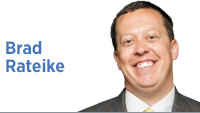Subscriber Benefit
As a subscriber you can listen to articles at work, in the car, or while you work out. Subscribe Now At a time in history in which most of the people I know are connected by at least one—if not three or four—wireless devices, expectations on engagement and responsiveness have changed, for better or worse. Most people would measure better access to broadband as a good thing, a sign of progress with many positive implications in economic development, education and health care, to name a few. However, I know I am not the only person who struggles to balance acceptable levels of responsiveness and presence, given the demands of constant connectivity.
At a time in history in which most of the people I know are connected by at least one—if not three or four—wireless devices, expectations on engagement and responsiveness have changed, for better or worse. Most people would measure better access to broadband as a good thing, a sign of progress with many positive implications in economic development, education and health care, to name a few. However, I know I am not the only person who struggles to balance acceptable levels of responsiveness and presence, given the demands of constant connectivity.
In professional services, clients want to believe you and your team are committed to be everything to everyone—on demand. That is not actually true to the letter, but it is the goal, if possible, especially during a time of crisis. Of course, what one person deems a “crisis,” another person may view as a general Tuesday afternoon challenge. Regardless, when people reach out, they know I have multiple devices that indicate as much, so they would like a response as soon as possible. Totally understandable and fair.
What is also understandable and fair is the expectation of people I meet with, virtually or in person (especially in person), who would like my presence and undivided attention in those meetings (for the entire time). From their perspective, they have made the effort to plan a time to meet and talk, so they expect to be able to talk about whatever they deem important in that window. They did not sign up to participate in multitasking, especially when sitting 3 feet away from me. The reality is, sometimes meetings go long, and sometimes they run into other meetings, which doesn’t allow for a catch-up window in between, which puts me in a tough spot.
At places like The White House or The Pentagon, most meetings require participants to leave electronic devices in their offices or in lockers outside of meeting rooms (for security reasons). The rules apply to everyone, so communication delays are inevitable. However, in the “normal” world, that luxury rarely exists, so living up to expectations of being all things to all people always is the impossible challenge we face sometimes. A friend who runs a large organization once told me that he stopped sending emails to anyone on his leadership team after 5 p.m., unless it was truly urgent, to avoid burning out his team by insisting they be “on” all the time. Eventually, after seeing him lead by example, the leadership team adopted the same practice, and the organization broke the cycle of behavior. He still leads that organization.
My goal has been to consistently get back to people in a timely manner and to be present and engaged during meetings. I am far from perfect, but I have found that most people (clients or otherwise)—at least the reasonable ones—will give me the benefit of the doubt. I do remember the former client who called me 10 minutes before the kickoff of a recent Super Bowl, slightly annoyed that I was at a Super Bowl party and not close to my computer. Connectivity and presence, on demand, for something that was not a crisis. Sigh.
Like many things in the professional world, there is no clear answer on the best way to balance this. However, I have found that by treating relationships as a two-way street from the beginning, expectations can be managed, especially from a credibility standpoint. It seems to work and is a whole lot more enjoyable than advocating for people to skip Super Bowl parties in case a “general Tuesday afternoon challenge” arises.•
__________
Rateike is founder and owner of BAR Communications and served as director of cabinet communications for President Donald Trump. Send comments to ibjedit@ibj.com.
Click here for more Forefront columns.
Please enable JavaScript to view this content.
